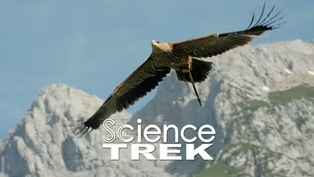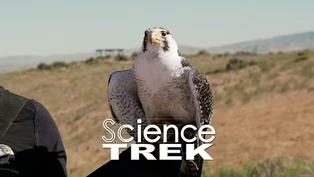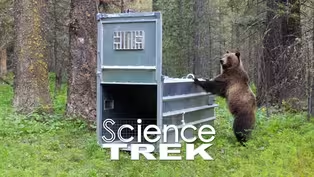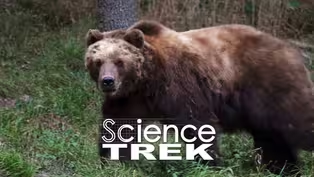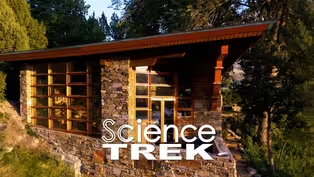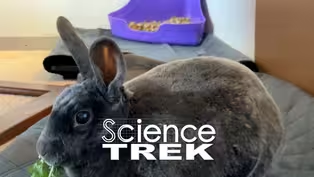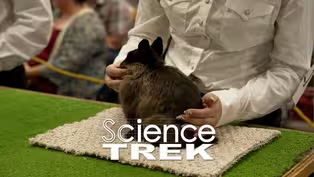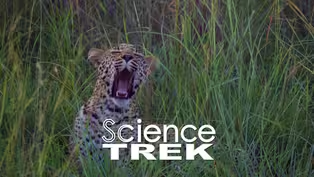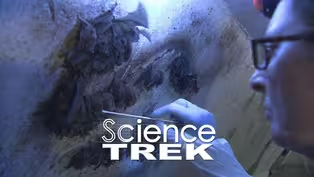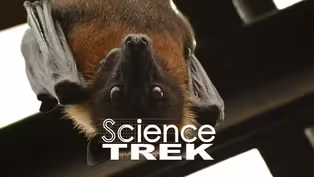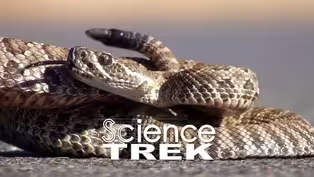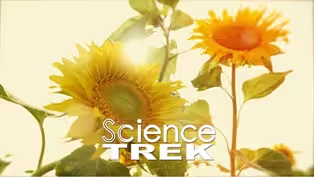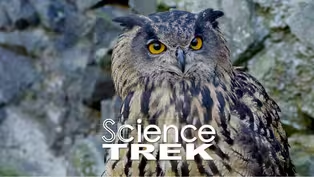
Animal Adaptation: How to Survive
Special | 6m 14sVideo has Closed Captions
Animals adapt to survive. Learn how animal adaptations help organisms.
How an animal looks or behaves reflects where it lives. It has to adapt to survive in its environment and passes those adaptations onto its offspring. Learn more about the different kinds of animal adaptations.
Problems playing video? | Closed Captioning Feedback
Problems playing video? | Closed Captioning Feedback
Science Trek is a local public television program presented by IdahoPTV
Major Funding by the Laura Moore Cunningham Foundation and the Idaho National Laboratory. Additional Funding by Sparklight, the Friends of Idaho Public Television and the Corporation for Public Broadcasting.

Animal Adaptation: How to Survive
Special | 6m 14sVideo has Closed Captions
How an animal looks or behaves reflects where it lives. It has to adapt to survive in its environment and passes those adaptations onto its offspring. Learn more about the different kinds of animal adaptations.
Problems playing video? | Closed Captioning Feedback
How to Watch Science Trek
Science Trek is available to stream on pbs.org and the free PBS App, available on iPhone, Apple TV, Android TV, Android smartphones, Amazon Fire TV, Amazon Fire Tablet, Roku, Samsung Smart TV, and Vizio.
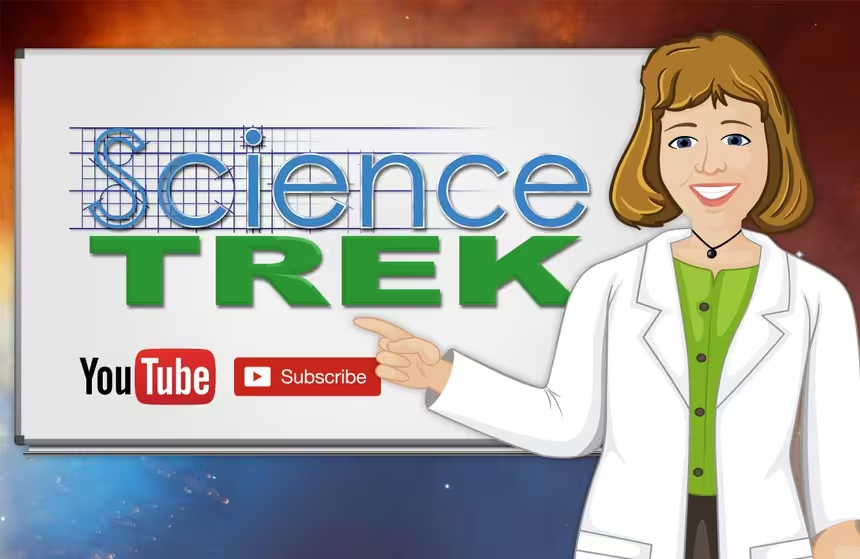
Science Trek
Science Trek is a place where parents, kids, and educators can watch short, educational videos on a variety of science topics. Every Monday Science Trek releases a new video that introduces children to math, science, technology, engineering, and math (STEM) career potentials in a fun, informative way.More from This Collection
Every animal in an ecosystem plays an important role in the well-being of our planet. Some are predators. Some are prey. Some pollinate plants or spread seeds. Each contributes to its part of the community and land around it. Take time to learn more about the lives of animals.
Video has Closed Captions
What special skills do birds of prey have that make them such good hunters? (6m 52s)
Birds of Prey: World Center for Birds of Prey
Video has Closed Captions
Visit the World Center for Birds of Prey. (6m 8s)
Video has Closed Captions
Learn what bears like to eat and why you should avoid them. (6m 49s)
Bears: Grizzly, the Bear in a Coat
Video has Closed Captions
How are grizzly bears different from other bears? (5m 33s)
Video has Closed Captions
Architects borrow from nature all the time. Find out how. (6m 26s)
Rabbits: Are You Rabbit Ready?
Video has Closed Captions
What do you need to know before getting a rabbit for a pet. (5m 57s)
Video has Closed Captions
Showing rabbits at your local fair opens the door to science. (6m 30s)
Video has Closed Captions
What is White Nose Syndrome and why is it so deadly? (5m 15s)
Video has Closed Captions
How do bats find their food at night? (4m 17s)
Video has Closed Captions
Why do snakes always look like they are staring? (3m 43s)
Providing Support for PBS.org
Learn Moreabout PBS online sponsorshipJoan Cartan-Hansen, Host: How an animal looks or behaves is a reflection of where it lives.
It adapts to survive in its environment and passes those adaptations onto its offspring.
And you can find examples of animal adaptations as close as your nearest pet.
[MUSIC] Student: What are you thinking about?
Student: What?
Student: What are you thinking about?
You looked lost in thought.
Student: I was just wondering why (dog)'s tail is so different from (cat)'s tail.
Student: They're just different animals.
Student: I wonder if Joan from Science Trek would have an answer.
Cartan-Hansen: I do.
It's because of animal adaptations.
To survive and have offspring, all living creatures need four things: Food, water, shelter and conditions to reproduce but things in any environment change.
So, to survive, living things needs to be able to change as well.
It's a process called natural selection.
Natural selection is a process where animals with traits that help them to survive are more likely to live and pass those successful traits on to their offspring's.
Adaptations are classified in three basic groups.
First are physical adaptations.
Have you ever looked at a bird's beak?
Why does a chicken's beak look so different from a humming bird's?
Why does an eagle's beak have a sharp downward curve and a sandpiper have a long narrow beak?
All the different shapes and sizes of birds' beaks are an example of natural selection.
A humming bird sucks nectar from flowers.
But if a humming bird's beak were shaped like a chicken's, it couldn't suck nectar from a flower to eat.
Student: What's going on?
Cartan-Hansen: And an eagle would starve if its beaks looked like a sandpiper's.
Because it couldn't easily rip up food for dinner.
Student: This doesn't work.
Cartan-Hansen: Birds' beaks adapted to their environment, and in this case, to make it easier to get a meal.
And adaptation isn't just for the birds And it isn't just about food.
Foxes who live in the desert have big ears to help them get rid of excessive heat.
Snowshoe hares have short ears to retain heat in the cold.
These same rabbits have another adaptation.
They use camouflage.
Their fur is white so they blend in with the snow so predators have a harder time seeing them.
The giant owl butterfly has markings that make it look like it has a large eye.
That marking helps to scare off predators that might eat it.
Some adaptations have more than one purpose.
Fish have overlapping scales to protect them from injury but also to reduce water resistance...and that helps them swim faster.
Elks have antlers to attract a mate but also to use for defense.
Some body adaptations are on the inside rather than the outside.
These are called physiological adaptations.
Crocodiles have internal glands that help get rid of the salt they swallow when eating saltwater prey.
Some snakes produce venom to help capture their meal and to protect themselves from being eaten.
Skunks have internal glands to spray a smelly oil that keeps predators away.
These physiological adaptations all help keep these animals alive.
The third basic kind of adaptation is behavioral.
These are inherited behaviors or habits that animals are already born knowing how to do.
They could be called instincts, like building a nest or hunting for food.
Some of these behaviors are how animals live.
Wolves prefer to live in groups.
It's easier to hunt for food in packs.
Elephants live in herds to help protect and raise young.
But, with the exception of lions, the big cats prefer to live on their own.
Other behavioral adaptations include things like migration, animals that move from one part of their habitat to another in search of food.
Or hibernation, animals that go into a sleep-like state during cold weather.
There are animals who live and eat during the day.
They're diurnal.
And animals who live and eat at night.
They're nocturnal.
All of these behaviors, These adaptations help animals get those four things they need.
And animals aren't the only ones who use adaptations to survive.
Plants, bacteria, fungi, all living organisms go through the process of natural selection.
Student: So, what about cats and dogs' tails?
Cartan-Hansen: Okay, when you watch dogs running, they can make a sharp turn.
Their front legs go in that direction, but without a tail, their back legs would swing wide and the dog would either go off balance or slow down.
But they throw their tails in the direction of the turn.
Their tail acts as a counter balance, helping them make a sharp turn and not lose speed.
So, their tails have to be a bit more substantial.
Cats hunt differently than dogs.
They often pounce and they use their tails to balance themselves as they jump.
Cats also use their tails as a counterweight when they fall to help them land on their feet.
Their tail needs to be more flexible.
Cats and dogs tails are different because they use them in different ways to help them survive.
Student: Thanks.
Student: What?
Student: Oh, uh, I said cats and dogs' tails are different because of they need to use them in different ways to help them move and catch food.
It's animal adaptation at work.
Student: How did you know that?
Student: I know things.
Cartan-Hansen: If you want to learn more about animal adaptations, check out the science trek website.
You'll find it at science trek dot org.
[MUSIC] ANNOUNCER: Presentation of Science Trek on Idaho Public Television is made possible through the generous support of the Laura Moore Cunningham Foundation, committed to fulfilling the Moore and Bettis family legacy of building the great state of Idaho.
By the Idaho National Laboratory, mentoring talent and finding solutions for energy and security challenges, by The Friends of Idaho Public Television and by the Corporation for Public Broadcasting.
Animal Adaptation: Size Matters, When it Comes to Leaves
Video has Closed Captions
Clip: Special | 1m 4s | Animals aren’t the only ones who adapt to their environment. Plants do too. (1m 4s)
Animal Adaptation: Super Senses
Video has Closed Captions
Clip: Special | 1m 4s | Which animals have super-hero like senses? (1m 4s)
Providing Support for PBS.org
Learn Moreabout PBS online sponsorship
- Science and Nature

Explore scientific discoveries on television's most acclaimed science documentary series.

- Science and Nature

Capturing the splendor of the natural world, from the African plains to the Antarctic ice.












Support for PBS provided by:
Science Trek is a local public television program presented by IdahoPTV
Major Funding by the Laura Moore Cunningham Foundation and the Idaho National Laboratory. Additional Funding by Sparklight, the Friends of Idaho Public Television and the Corporation for Public Broadcasting.
